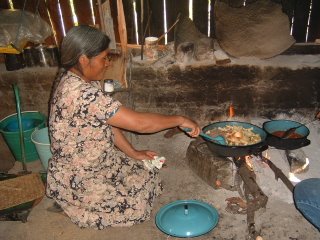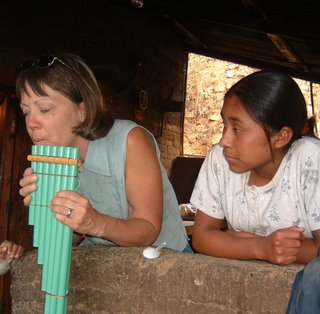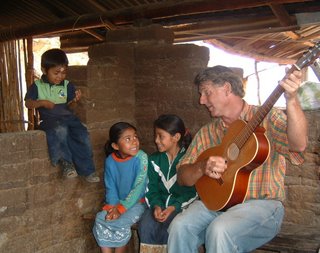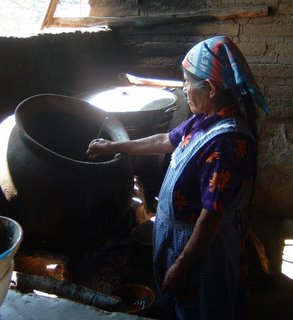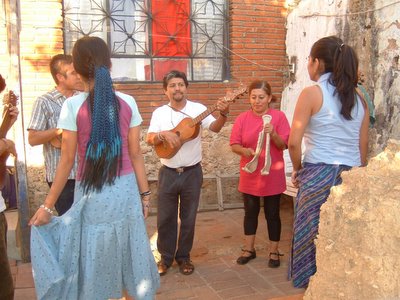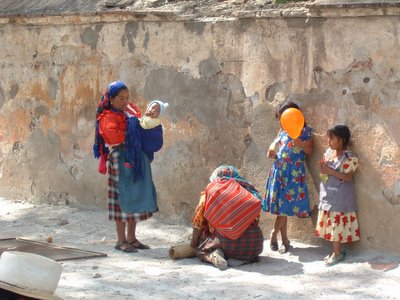

Son Jarocho.. (Sohn..Hah- ROW-cho) ..is a vibrant regional folk music style with origins in the state of Veracruz on Mexico's eastern coast. Son, simply means the music is rural, or folk music.
The folk music of Mexico starts to emerge as a mix of Spanish, native or indigenous, Caribbean, Colombian and Venezuelan, and African music and dance. The Spanish during the conquest brought music influenced by the African Muslims, Sephardic Jews, and Gypsy cultures. These combined with the ancient Meso-American native groups, and with the slave trade to the Caribbean region, African rhythms and percussion were brought in.
The Spanish brought the European Baroque style instruments of the violin, harp and guitar. And for the next 300 years, the indigenous and Mestizo groups of Mexico developed their own regional stringed instruments and musical flavors and dance.
Since Veracruz has been the main port of entry from the sea for Mexico in it's history, here the races and music mixed...the Mexican, Spanish, the Africans brought in for the labor in the sugar cane plantations in the early 19th century...sailors, farmers, merchants, laborers...all mixed together their musics.
Many of the regional folk music styles of Spanish America are song and dance styles using a 6/8 rhythm syncopated with 2/4 and 3/4 rhythms. Jarocho music of Veracruz is one of those, with its percussive rhythms, syncopation and improvisations.
The musical heart of Jarocho, is the instrument called the JARANA, which drives the rhythm with chords. A small guitar based on the Baroque era guitar, it has five courses of strings, and at least 3 of these are doubled ( same note ), and Jaranas come in three sizes.
Next is the REQUINTO, a melody instrument with four strings that is plucked with a cowhorn pick and improvishes the percussive melodies.
The dance aspect of son jarocho is called ZAPATEADO, and it is a strong part of the style. It is a percussive heel dance of tapping out the beats with both feet. As musicians perform the sones, people dance on a wooden platform that is called the TARIMA.
The QUIJADA is a mule or horse jawbone that is scrapped and hit with a stick to povide more percussive rhythm.
A FANDANGO, is an open musical ritual. There is a common battle of verse compositions from the 'soneros', singers who can more deeply describe the beauty of a flower, a woman's smile, who can best descibe a loyal friend, a beautiful dawn, the pain of betrayal, the taste of wine, celebrate the charms of a women, express social or political differences. Singing verses, 'versada' is the way to express yourself in a fandango.
Son Jarocho is spontaneous, everyone interprets their SON, their ESTILLO, their VERDAD. Everything is about sharing.
Katy and I have found a local treasure, in the talents of the Bautista family. I met and went with the whole family on a trip to the 27th Encuentro National de los Jaraneros ( National gathering of Jarocho musicians ) in Tlacoltalpan, in the state of Veracruz in early Febuary.
And here, back in Oaxaca we usually meet once a week in their home for lessons in Jarocho music. Katy is learning the zapateado dance, and I am learning to play the requinto and jarana. The whole family is quite gifted, as they all sing and dance and play. And above that, the are hugely giving if their personalities and passions in life. We are thankful students, and all of us are dear friends.
Music washes away from the soul the dust of everyday life.
Berthold Auerbach
Every now and then, take out your mind and dance on it. It is getting all caked up.
Mark Twain
